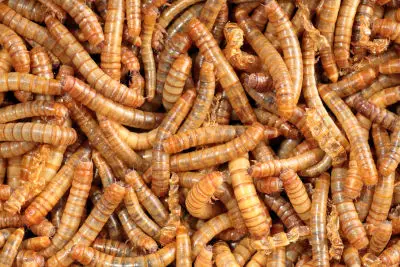How do Lizards Usually Die? A Comprehensive Overview
Lizards are fascinating creatures that can be found in almost every part of the world. They come in various shapes, sizes, and colors, and are known for their unique physical characteristics and behaviors. While lizards are often seen as resilient creatures, they are not invincible and can die from a variety of causes. In this article, we will explore the different ways in which lizards usually die.
One of the most common causes of lizard deaths is predation. Lizards are preyed upon by a variety of animals, including birds, snakes, and mammals. Many species of lizards have evolved different defense mechanisms to avoid being eaten, such as camouflage, tail autotomy, and toxic skin secretions. However, these defenses are not always effective, and many lizards still fall prey to their predators.
| Are these foods dangerous for your Beardie? | |
| Avacado? Click here to learn, from this guide, if this food is dangerous |  |
| Superworms? Click here to learn, from this guide, if this food is dangerous |  |
Another common cause of lizard deaths is disease. Like all animals, lizards can contract various diseases and infections that can be fatal. Some of the most common lizard diseases include respiratory infections, parasitic infections, and bacterial infections. These diseases can be difficult to diagnose and treat, and can quickly spread throughout a population of lizards.
Natural Causes of Death
Age-Related Decline
Lizards, like all living beings, have a natural lifespan. As they age, their bodies become weaker and more susceptible to diseases and injuries. The rate of aging varies among different species of lizards, but most of them start to show signs of age-related decline after reaching maturity. Some of the common symptoms of aging in lizards include reduced activity levels, decreased appetite, and slower movements. Eventually, the lizard’s body becomes too weak to continue functioning, and it dies of natural causes.
Disease and Parasites
Lizards are vulnerable to various diseases and parasites that can cause severe health problems and even death. Some of the common diseases that affect lizards include metabolic bone disease, respiratory infections, and skin infections. Parasites such as mites and ticks can also cause significant harm to lizards. These parasites feed on the lizard’s blood and weaken its immune system, making it more susceptible to other diseases. In severe cases, untreated diseases and parasites can lead to the lizard’s death.
To prevent disease and parasite infestations, it is essential to keep the lizard’s enclosure clean and provide it with a healthy diet and adequate lighting and heating. Regular check-ups with a veterinarian can also help detect and treat any health problems early on.
Predation and Defense Mechanisms
Predator Attacks
Lizards are often preyed upon by a variety of animals, including birds, snakes, and mammals. The risk of predation is particularly high for young lizards, which are smaller and less agile than adults. Predators may attack lizards in a variety of ways, including ambush, pursuit, and stalking.
Ambush predators, such as birds of prey, may swoop down on lizards from above, while pursuit predators, such as snakes, may chase lizards on the ground. Stalking predators, such as cats, may patiently wait for a lizard to come within striking distance. In some cases, lizards may be attacked by multiple predators at once.
Defensive Strategies
To avoid being eaten, lizards have evolved a variety of defense mechanisms. One common strategy is camouflage, which allows lizards to blend in with their surroundings and avoid detection by predators. Some lizards are also able to change color to match their environment, making it even harder for predators to spot them.
Other lizards have developed physical defenses, such as spines, scales, and horns. These structures can make it difficult for predators to swallow or grip onto the lizard. Some lizards are also able to detach their tails as a distraction, allowing them to escape while the predator is distracted.
In addition to physical defenses, lizards may also use behavioral strategies to avoid predation. For example, some lizards will freeze in place when they sense a predator nearby, hoping to avoid detection. Others may run in a zigzag pattern to make it harder for the predator to catch them.
Overall, while lizards face many threats from predators, they have evolved a variety of effective defense mechanisms to help them survive.
Environmental and Human Factors
Habitat Destruction
Lizards are known to inhabit a variety of environments, from deserts to rainforests. However, habitat destruction due to human activities such as deforestation, urbanization, and agriculture can have a significant impact on lizard populations. Clearing of forests and other natural habitats can lead to a loss of food sources and shelter, making it difficult for lizards to survive.
Pollution
Pollution is another significant environmental factor that can affect lizards. Pesticides, herbicides, and other chemicals used in agriculture and industry can contaminate the water and soil, leading to a decrease in lizard populations. Air pollution can also negatively impact lizards by affecting their respiratory systems.
Human Interaction
Human interaction can also lead to the death of lizards. Lizards may be killed unintentionally by vehicles on roads or by pets such as cats and dogs. Additionally, some people may intentionally kill lizards due to fear or superstition.
In conclusion, environmental and human factors can have a significant impact on the survival of lizards. It is important to take measures to protect their natural habitats and reduce pollution to ensure the survival of these fascinating creatures.